Iceland hosts some of the most beautiful sceneries in the world, making it a must-go destination for backpackers. There are expansive panoramas, magnificent waterfalls, and active volcanoes around the country. The adventurous traveler will find many opportunities to stray off the main path and explore this austere, stunning area.
If you love adventurous escapades and visiting Iceland still needs to be added to your travel wish list, this guide will explain why it should be. Iceland’s tourism industry is booming, and as the nation adapts, there will undoubtedly be some native cultures quickly fading away. So, get there soon before the magic is lost.
For information on how to travel to Scandinavia on a budget, the best activities, destinations, itinerary recommendations, and more, read this comprehensive Travel Guide!
Why Go Backpacking in Iceland
The exotic scenery of Iceland can be explored for weeks at a time while you party in Reykjavik and soak in geothermal hot springs. You can also hike through the highlands, explore the coastline by stand-up paddleboard, and explore the many waterfalls in the country.
Iceland’s Ring Road, the country’s only roadway that circles the entire island, is the main route for visitors, especially those traveling there for the first time. Consider Iceland’s northern region if you want to avoid crowds. Numerous travelers use the seven-day stopover who either need help to make it here or pass through hastily.
The only available-in-the-summer outdoor hiking is in the central highlands and Iceland’s most isolated region, the western fjords.
Iceland’s Best Backpacking Itineraries
The Ring Road is the best route for tourists visiting Iceland. You can add the western cove, eastern fiord, and highlands if you have extra time. But you must have a 4WD vehicle to go there; for 2WD car drivers, the ring road would be the most convenient.
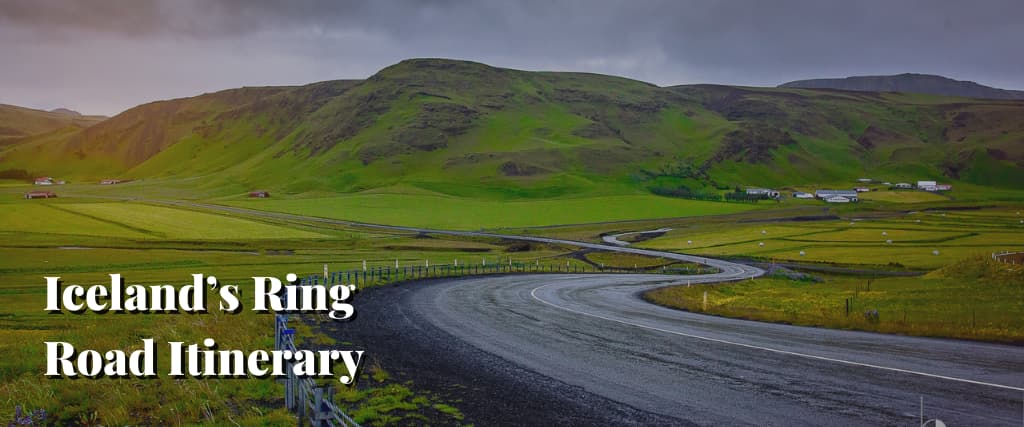
Iceland’s Ring Road Itinerary
The ring road is the country’s most iconic Iceland backpacking trail. It will allow you to cover many of Iceland’s beautiful sceneries in just ten days. And while you might complete this schedule in less time, there are a lot of activities you can engage in between the destinations; the more time you have, the better!
This route is a large circle, so you can follow it either way! There is no specific route, but for this itinerary, let’s focus on the clockwise manner.
Travel counterclockwise from the hip capital, Reykjavik, to Upper Borgarfjorour; you may explore the surrounding area and lava tubes.
Proceed to Stykkishólmur, a settlement with a view of the bay.
If you can spend more than ten days, consider extending your trip to include horse riding, hiking along the coastline, and glacier excursions on the Snaefellsnes Peninsula. Numerous hiking trails, volcanic craters, bird cliffs, lava tubes, and lovely flora are all found at SNP (Snaefellsnes National Park).
For whale viewing excursions and puffin watching, visit the Öndverdarnes destination in July or August.
As you go further north, stop at Tröllaskagi for stunning views of the surrounding valleys and mountains. There are also lake and volcano craters in the Myvatn region. Höfn is a suitable starting point for visiting Vanajökull’s ice cap.
Your next stop should be at Vík, a beach with basalt columns where you can see puffins!
Before finishing with Golden Circle, you can climb through the highlands here or head west for Skógafoss and Seljalandsfoss, two magnificent waterfalls.
Iceland’s Golden Circle Route
This itinerary is popular among people visiting Iceland for a shorter period, less than ten days. The route is becoming common thanks to the reasonably priced layovers by Wow Air.
First, spend the day driving to Iceland’s most well-known waterfalls, Seljalandsfoss and Skógafoss!
The Golden Circle route goes around the areas near Reykjavik. It will take you to Gullfoss, the most well-known waterfall in Iceland, allowing you to see its breathtaking double cascade.
You can also take a break at the iconic Geysir, one of the country’s most popular tourist destinations.
You can make another stop at PNP (Pingvellir National Park) to experience the continental plates’ rupture. Interestingly, you may dive through two plates here!
A tour of the Svnafellsjökull glacier tongue can also be a great addition to the regular, well-proven Golden Circle itinerary. If you are a huge fan of the Game of Thrones tv program, then make a point of seeing the glacier; it served as a backdrop for the series.
Destinations to Visit in Iceland
Tour Reykjavik City
Consider starting your backpacking trip in Iceland in Reykjavik— unless you want to arrive by boat. The nation’s capital is quaint, warm, and endearing. It doesn’t matter where you stay in Reykjavik because the city is so charming and small, though if you can go close to the center, do so.
The city is home to several fascinating attractions, such as the Icelandic Phallological Museum, sometimes known as the penis museum. There are also many local businesses to tour and fantastic restaurants to have some meals at.
Reykjavik city has a small population of 120,000 and will take you two days to explore. Take some time exploring the streets and sampling Iceland’s regional cuisine. If the thought of eating whale blubber doesn’t appeal to your palate, you’ll be amused to learn how popular vegetarianism is in Reykjavik. Ideal for less adventurous people.
Tour The Golden Circle
The Golden Circle, outside Reykjavik, is a well-known tourist itinerary that passes via the geyser Strokkur, the national park Thingvellir, and Gullfoss. The route is one of the most “touristy” attractions in Iceland, and it’s regarded as a must-see on any itinerary for a road trip there.
While you ought to visit each, you’ll want to plan your time carefully because there are other, much more secluded locations to view in Iceland that are just as breathtaking. Make sure to arrive early to escape the crowds! You can stop at Laugarvatn, a well-liked resting place for backpackers traveling the Golden Circle.
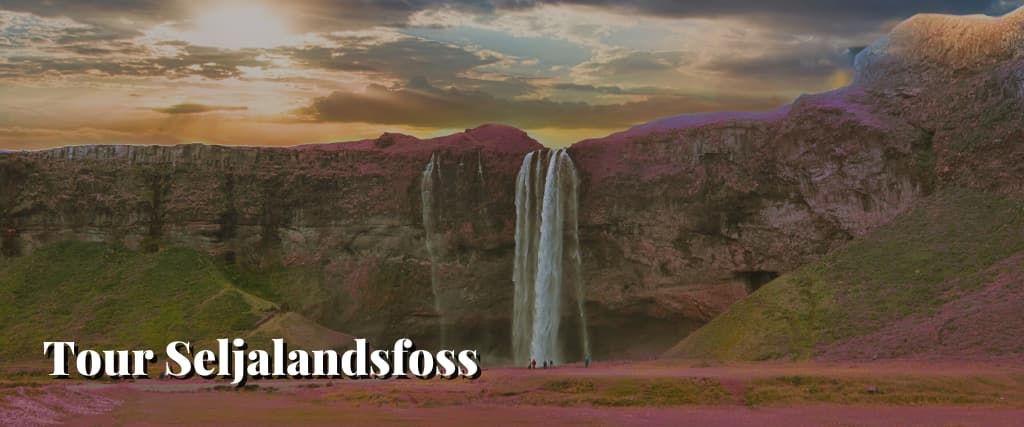
Tour Seljalandsfoss
Seljalandsfoss is located east of Reykjavik on the major highway as you near Vk. It can get rather crowded because it is the primary bus stop and popular tourist destination, but it is unquestionably a sight you should see.
You can stroll in behind this 60-meter waterfall for an eye-catching viewpoint, making it unique from the other waterfalls in Iceland. It is one of the few waterfalls with a gift shop that serves food and sells souvenirs.
Tour Vík
The gleaming black sand beaches surrounding the settlement of Vik make this destination a must-see on every Iceland backpacking trip. You will also enjoy the beautiful cliffs, often shrouded in fog, in places without beaches. The puffin, Iceland’s most sought-after bird, calls these places home. For a better view of the area, climb the nearby hill.
Tour Skógafoss
The Skógafoss is a fantastic waterfall you need to see while hiking through Iceland. It is a reasonably stunning sight due to its size and height. A nearly constant rainbow is also left behind by the mist that accumulates at the base; you’re always welcome to take some fantastic photos here.
According to legend, there may be hidden treasure at the bottom of this waterfall, so be keen on details, and you may find your luck.
An eatery, a modest motel, and a campsite are located at the base. The Fimmvöruháls Trail, a legendary 30 km journey across glaciers and through two mountains, also begins at Skógafoss.
Take to the Trails of Laugavegur and Fimmvöruháls
To truly appreciate Iceland’s beauty, you should make several stops while driving through the Ring Road. You will understand the region once you start slogging over the Martian panorama. Every village and town has a ton of small treks, but if you are ready for an expedition and have time, consider taking these hikes.
The hike begins in Landmannalaugar, a stunning geothermal wonderland.
The region is becoming well recognized for its colorful rhyolite peaks and cozy hot springs, which locals have enjoyed for generations. The trail leads into the highlands, where the view is rich in contrast and pattern.
You can hire a tour guide; they are knowledgeable and will educate you about the heritage of the plants and wildlife in this area. Depending on what you want, you can stay the night in secluded and picturesque areas, either in mountain cottages or tents.
Beautiful sites like Hrafntinnusker, Alftavatn, and Thorsmork are among the many places you can visit in this area.
There are cabins you spend the night in along the trail and in the parks if you are not hiking through Iceland. However, owning a tent will afford you more alternatives and help you spare money.
Tour Seyðisfjörður
Seyðisfjörður town, a lovely, picturesque little hamlet town, is located on the east coast. It is a well-known hippie settlement with a sizable artistic community that attracts many backpackers visiting Iceland.
The trip into the town, though, can be the most breathtaking throughout your visit here. The route is a twisting, gravelly ascent with stunning views.
Coasting into town after descending the mountain can be a memorable moment for anyone. The place also has good walks for people who want to stretch their legs.
Tour Svartifoss
Svartifoss, close to Skaftafel, is one of Iceland’s three national parks. This destination is gloomy because of the dark, black pillars surrounding it.
The park spans roughly 14% of Iceland, making it particularly worth visiting.
There are authorized camping spots and hiking routes throughout the place. Contact one of the tourist centers to find out more, get directions, or schedule a tour.
But since there is little lodging around Svartifoss, many hikers opt to stay in the Hvolsvollur region.
Tour Jökulsárlón
Any schedule for a backpacking trip through Iceland should include a stop at this glacier lake. Situated on the boundaries of the Vatnajökull National Park in south-east Iceland (where Svartifoss is),
Jökulsárlón provides a close-up view of the dissolving glacier Breiamerkurjökull. This is a terrific area to unwind and explore, with icebergs drifting down the waves and some gorgeously attractive colors. Watch out for seals, which frequently feed nearby before winter.
You can take a zodiac excursion if you wish to leave the ground and enter the glacial cove. While this can be a tall order for those on a tight budget, it has tons of exciting information about the glacial lake.
Tour Dettifoss
Dettifoss, regarded as Europe’s most powerful waterfall, is a fantastic sight. Unfortunately, getting to this site can be challenging due to the poor roads. Therefore, you should take your time and drive slowly. Once you get there, you will only enjoy the view from one side, but both sides have some breathtaking views, so you shouldn’t worry too much.
You can approach perilously close to the falls due to the lack of handrails around the cliff. This is a lovely spot to unwind and take in the scenery. Iceland is a must-see while traveling on foot.
Tour Mývatn
Lake Mvatn, located between Dettifoss and Goafoss, is a must-go destination for people who enjoy backpacking or are fans of the Game of Thrones series. This place is a picturesque region worth seeing and was used as a backdrop in the popular tv show Game of Thrones.
You can arrange several G.O.T tours to see the lake and other local spots featured in the HBO series!
After a hike in the area, you can dip in the Mvatn Nature Baths, a geothermal lagoon. The adjacent geothermal location Hverir has a bunch of boiling and smoking craters, worth a short trip. And while there is some stench, the site is a nice pit stop.
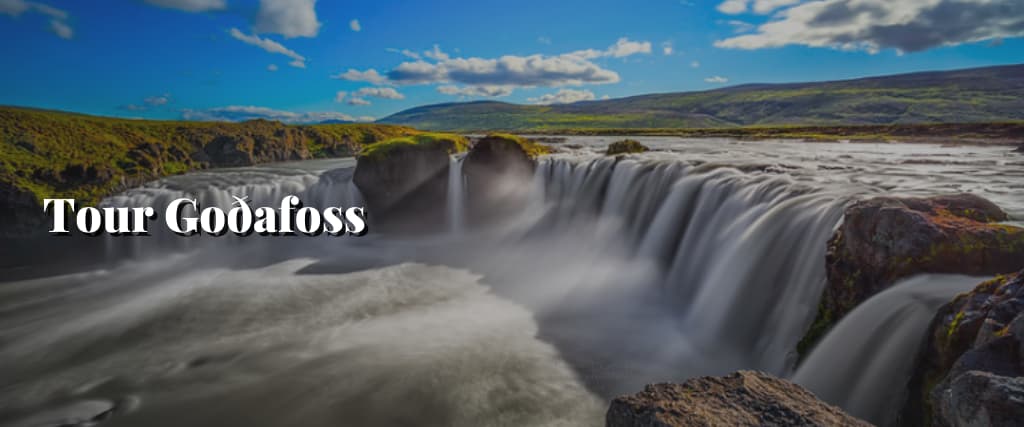
Tour Goðafoss
Goafoss, or Waterfall of the Gods, is a magnificent site you should visit while in Iceland. Goafoss isn’t an exception to the rule that anything with the title “… Gods” is worthwhile including on your itinerary.
It’s accessible because it’s close to Akureyri, Iceland’s city. Plus, it is close to Mvatn and Dettifoss, so you can see all three in one day.
Tour Akureyri
This center features among the few best cities you’ll go through if you’re backpacking Iceland. If you’ve been traveling semi-off the grid, this town in the middle of the island gives you a chance to reconnect with contemporary life (however, if you enjoy a low-key lifestyle, consider passing by). It is situated along the northern coast.
Despite being primarily a port and fishing hub, the little city contains everything you might need. It’s a beautiful spot to stock up on food or other difficult-to-find products, even if you’re passing through.
It’s simple to walk around Akureyri because it’s a small town. Think about going to the historic Catholic church (completed in 1912) or a trek in the surrounding hills for fantastic views.
Tour the West Fjords
The west fjords, located in Iceland’s northwest, occupy a sizable portion of the island. Tourists with just seven days or less are advised to skip this section. You should spend a day or two driving along the coastline and admiring the breathtaking scenery.
You won’t encounter many people while traveling Iceland because very few tourists visit the west fjords. However, the place can be crowded during puffins season; the Latrabjarg Peninsula is probably one of the best places to see puffins.
Tour Snaefellsness National Park
If you can park your car by the coast of Snaefellsness while backpacking Iceland, consider spending a day climbing the cliffs and volcanoes around this place. There are sheep paths around this place that are gratifying but can be challenging due to the wind’s sharpness and persistence.
Also, consider making a stop at the glacier. It is a genuinely unusual experience to be trudging over a glacier by yourself on a volcano. The experience is beyond description but an ideal way for your adventure to end. If you’re in the vicinity, remember to visit the national park!
Adrenaline junkies may reserve glacier-walking tours, but they are expensive. Glacier excursions can last from hours to a full day, costing between 10,000 and 40,000K. You can climb up to the glaciers and go around inside of them, but you must use extreme caution. Numerous deep valleys will abruptly put an end to your trekking trip!
Top Activities to Do While in Iceland
1. Traveling along the Ring Road
Ring Road is one of Iceland’s most famous journeys! Try traveling at least a portion of this roadway because there are so many breathtaking sites along the way!
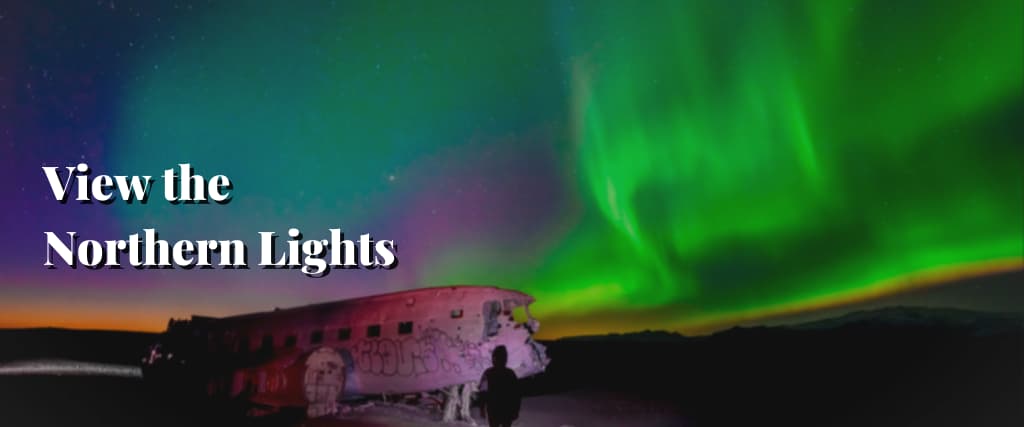
2. View the Northern Lights
The aurora borealis, or the Northern Lights, are some of the most spectacular you can ever see. You have a better chance of watching this phenomenon occur in Iceland between September and April. Please keep your eyes open, although they are best observed in a dark, isolated region free of light pollution.
Ask the locals upon your arrival if you visit in August or early May since you might still have a chance to capture them. Staff at hostels, campgrounds, Airbnb hosts and hotel hosts can also inform you if you stand a chance. Seeing them can leave a lasting memory in your life.
Planning a trip that gets you out over the sea is recommended for better viewing of the Northern Lights, where you’ll find the least light pollution.
3. Puffins: Bird-Watching
The puffin breeding season lasts from mid-May to mid-August in Iceland. You may go out to observe some of these adorable little creatures if you are backpacking around Iceland during that season. If birds are your passion, you should plan a comprehensive tour with a business that can bring you to the best locations by boat.
Several of Iceland’s peaks offer opportunities for the casual viewer to observe the birds, and you might also ask the Icelanders around your hotel for guidance.
On your journey, make sure to view puffins. These birds are endangered owing to climatic changes and illegal hunting.
4. Backpack the Fimmvörðuháls and Laugavegur Trail
The Laugavegur and Fimmvöruháls excursion has been featured in the “World’s Best Hikes List” by National Geographic. It passes through a rather unusual and extraordinarily varied environment. You can expect to witness anything from icy-white peaks to scalding hot pools and volcanoes.
You can pass through various geothermally active landscapes, including obsidian fields, colored rhyolite mountains, and glacial rivers. You can also spend the night in isolated highland cabins that are basic but charming. Each location is distinct and reveals new elements of the trail’s constantly shifting scenery.
5. Whale Watching
While most whale-watching excursions occur at Reykjavik or Akureyri, you may see different whale species almost anywhere in Iceland. The best time to see whales is between late March and early September, when you can see over 20 species.
6. Walk Over a Glacier or Join a Snowmobiling Hikes
Iceland is renowned for its bitterly frigid temperatures, so it’s only advisable to take advantage of them anytime you’re there. Consider going on a guided snowmobiling excursion or taking a glacier trek if you are there in the winter. Iceland’s glaciers rank among the outstanding natural beauties on earth. The glaciers in this nation are so enormous that they’re visible from space.
While exploring Iceland’s natural beauty is a magnificent experience, hire local guides as it can be pretty dangerous. A guided adventure will ensure a good time and safety.
7. Scuba Dive Through Continental Plates
There is just one other place on the planet where you can scuba dive right into a tectonic rift: Silfra. The 1789’s earthquakes in In the Thingvellir region caused several fissures, but the Silfra fissure destroyed the subsurface spring that contained glacial ice melting from the neighboring Langjökull glaciers.
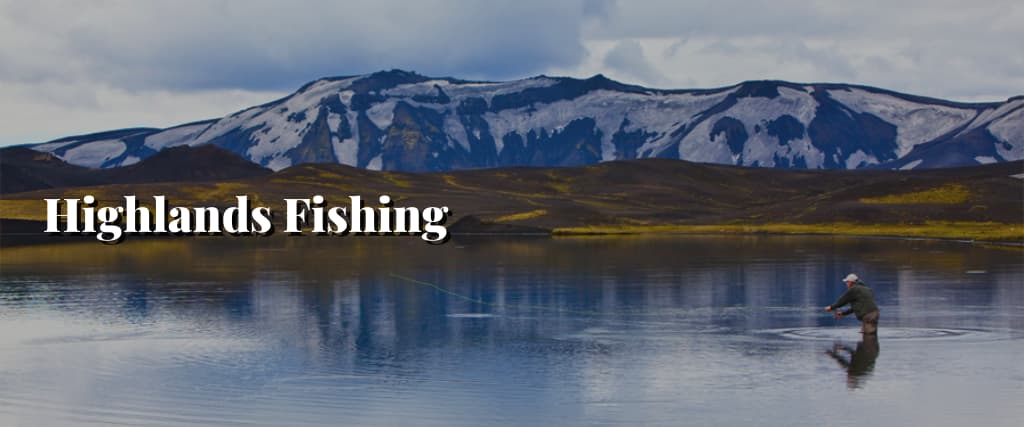
8. Highlands Fishing
Join experienced Icelandic fishermen on a fishing expedition into the mountainous areas for a unique journey.
Accommodation for Backpackers in Iceland
The finest places to stay while touring Iceland are hostels, guest houses, hotels, and Icelandic homestays. Based on where you go and when you go, prices change.
The best motels in Reykjavik and throughout Iceland are frequently more expensive, but they provide good value.
Accommodations at hostels: The most popular accommodation options in Iceland are Airbnb, hostels, and guesthouses. Most hostels are built around the central part of Reykjavik. However, more hotels are beginning to appear along the ring road. B&Bs or guesthouses are your most affordable choice outside of the city, the budget of $35 to $40 each night will be sufficient.
Besides being the cheapest option, Airbnb still provides more privacy than other accommodation alternatives.
The Best Accommodations in Iceland
| Place | Facility | Benefited |
|---|---|---|
| Reykjavik City | Loft Hostel | In 2015, Loft Hostel was recognized by the Oscars as the top hostel in Iceland. They serve cheap cold beer! It also has spacious and nicely finished balconies to allow you to socialize while admiring the stunning cityscape. |
| Akureyri City | Akureyri Backpackers | Akureyri Backpackers might be the nicest ones you will ever see. This hostel is clean and contemporary. A free sauna is also available! |
| Keflavik City | Base Hotel | Base Hotel is close to Keflavik Airport and affordable lodging, making it the ideal starting point for discovering the Reykjanes Peninsula’s tucked-away beauties. |
| Snaefellsbaer | The Freezer | The Freezer is a fantastic backpackers’ hostel featuring open mic evenings, stand-up comedians, and musical performances. It has a great social atmosphere and an accommodating staff. |
Camping Escapades in Iceland
There are more than 200 campsites scattered throughout Iceland, and you don’t need to make reservations for any of them. This huge number makes it ideal for tourists who enjoy serendipity to visit this place. The campgrounds are fully equipped, including warm showers and charging stations. Travelers, rejoice if you enjoy venturing off the beaten path and into the countryside!
The Iceland authorities allow backpacking anywhere except restricted areas, close to homes, and farmed (i.e., grass fields are also considered cultivated areas). You can set up a tent in Iceland near a waterfall, far from cities for the finest sight of the northern lights, or atop a mountain.
You could significantly reduce your lodging costs in Iceland by camping. Surprisingly, you’ll still have access to the amenities that hostels provide. Iceland has plenty of warm public pools that are great for a quick refresher. The county also boasts plenty of water sources, allowing you to relax and have fun.
Some areas are accessible, while others cost up to $5 for a dip—a fair price to avoid turning people away with your odor.
Costs of Backpacking in Iceland
Most tourists find Iceland to be expensive. It is among the most costly places to travel to, according to most travel experts. For example, a bowl of soup can go for up to $25. Expect to use a few hundred dollars each day if you’ll be residing in private rooms or hotels, dining out often, and taking the best excursions in Iceland.
Although lovely, hostel dorm rooms will save you $50 per night. However, camping at a designated campground will cost only about $20 per person. Wild camping is entirely free in Iceland if you own a tent.
Everything is imported nm Iceland, including food, making having meals at fancy restaurants very expensive. While eating out is costly, supermarket stores like Bonus provide reasonable prices! Overall, if you’re on a budget, strive to adhere to dry food rather than produce.
If you hire a truck for your trek to Iceland, reserve it in time to get the best deal. Also, get RentalCover.com coverage to protect your car against theft, windshield damage, and other typical occurrences for a lot less money than you would spend at the hire counter.
A dollar is equivalent to 2269.98 ISK, so you might feel loaded after exchanging US cash for Icelandic Krona. If you’re not careful, Iceland can get pretty expensive.
Below is an illustration of how much you could spend every day while visiting Iceland:
| Expense | Backpacker on Tight Budget | Frugal Backpackers | Extravagant Backpackers |
|---|---|---|---|
| Accommodation | $25 | $55 | $100 |
| Activities | $10 | $30 | $80 |
| Nightlife | $20 | $30 | $50 |
| Transport | $7 | $12 | $18 |
| Food | $15 | $25 | $50 |
| Totals per day | $77 | $152 | $298 |
Money in Iceland
Most individuals in Iceland use their credit cards to purchase literary everything; thus, carrying cash is uncommon. Since they are generally recognized, money will only be necessary on buses. Just be cautious inside the bar; rounds will seem terrific until you confirm your balance.
Tips for Traveling Iceland on a Budget
- Camp: Iceland is a terrific destination because there are many beautiful sites to camp in the countryside. If you’re feeling very daring and would like to save some money, think about purchasing a hiking hammock tent model like:
- Sea To Summit Pro —(Best Camping Hammock)
- Alpine Mountain Gear —(Best Value Tent)
- Kammok Roo Single Hammock —(Best Ultralight Camping Tent)
- Hennessy Hammock —(Best Thru-Hiker Tent)
- ENO SkyLight Hammock —(Spacious Hammock)
- Kammok Mantis Hammock —(All-Season Tent)
- Lawson Hammock Blue Ridge —(Best Hammock Tent)
- Tentsile T-Mini Double Hammock —(Most Durable Tent)
- ENO DoubleNest —(Classic Double Nest Tent)
- Cook your meals: Preparing your meals will save you cash if you have a limited budget. You can tag a lightweight travel stove
- Book transportation early: Airline and transport tickets are significantly less expensive when purchased in advance
- Couchsurf: You can consider Couchsurfing since Icelanders are fantastic. Couchsurfing, hosting is free. Never should a host request payment from a visitor, nor should the visitor make an offer. However, you (a visitor) should express gratitude by preparing a meal, taking the homeowner to dinner, providing a modest gift, or making other gestures.
- Bring a travel bottle of water to reduce costs daily!
Why Should You Carry Your Water Bottle while Visiting Iceland?
Plastic washed ashore on even the sandiest shores contributes to and maintains the Big Blue’s beauty.
While you won’t change the world immediately, you could be part of the solution rather than add to it. Traveling to the most distant regions of the world makes you aware of just how bad the plastic crisis is. And should be even more motivated to keep traveling responsibly.
You won’t be purchasing expensive water bottles from stores any longer! Instead of wasting money or turtle lives, travel with a purified water bottle.
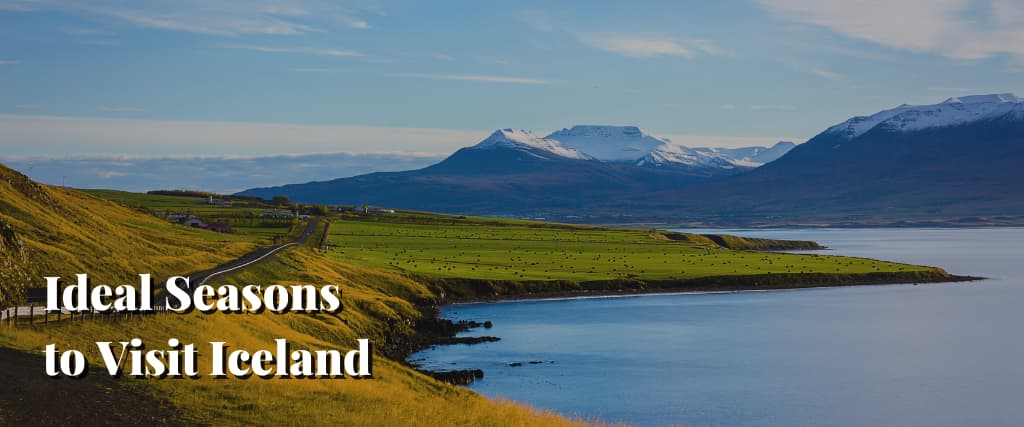
Ideal Seasons to Visit Iceland
Iceland is chilly throughout the year, except over the summer months. While summer months are pretty colder in Iceland than in most parts of the world, it has long days ( 24 hours in June), more sunny days, and less rain. Nevertheless, the climate in Iceland is erratic, and you may experience clouds, rainfall, sun, or breeze at any time—sometimes on the same day.
Puffins are also spotted in July and early August. Summertime is the most costly and busiest season to visit Iceland. However, it offers the best consistent weather for hiking, snorkeling, and other outdoor activities.
Visiting outside peak season is a fantastic time to explore Iceland if you only intend to drive around the Ring Road and won’t be doing any multi-day/week excursions. Sunny days are still possible in September and October and April-May.
If you don’t mind the cold and snow, wintertime can also be a fantastic time to backpack Iceland. There is a strong chance you’ll see the Northern Lights, which will be relatively cheap. Additionally, Iceland’s wintertime beauty is impressive to behold! However, a large portion of the area is currently inaccessible.
Iceland Festivals
- Reykjavik Artwork Festival: The main festival for local and foreign theatre, choreography, visual art, and musicals takes place annually in Iceland. In addition to focusing intensely on past and current Icelandic heritage, the festival includes eminent composers worldwide. The festival runs over several days towards the end of May and offers events for individuals of all ages and backgrounds.
- Winter Lights Festival: The weekends festival in February features magnificent light-art displays throughout the city’s core, lighting up some of the most well-known structures and public areas
- Airwaves Music Event: This yearly event in October/November features performances throughout several locations in Reykjavik. The festival has become a sensation on the world music scene. This event’s tickets sell out fast and early, but there are frequently free off-site performances to attend at pubs and cafés throughout the city.
- Secret Solstice Festival: This event is a multi-genre worldwide music that runs in June across several stages for four days (and nights). Besides enjoying heavyweights like Die Antwood and Radiohead, Secret Solstice is a terrific festival to explore new bands.
Packing List for Iceland Tours
GRAYL Geo press – Filtered Bottle
If you have a filtered water bottle, you may take water from almost any source. Additionally, the GRAYL Geopress is by far the most efficient in the market.
Travel Security Belt
You may store up to twenty bills within this ordinary-looking belt’s hidden pocket and pass it through airport screening without triggering them.
Microfiber Towel
The towels in hostels are mostly filthy and take ages to dry. Microfiber towels can be used as a yoga mat or comforter as necessary and dry rapidly.
Camping Hammock
While carrying a tent isn’t always possible, hammocks are small, inexpensive, durable, and sexy (ladies love camping hammocks), enabling you to set up camp reasonably anyplace.

Petzl Actik Core Headlamp
A good headlamp might save your life. It would help if you had a headtorch to tour caves and dark monuments or locate your way to the restroom during blackouts.
Hanging Toiletry Bag
Since hanging toiletries bags are an effective method to arrange your toilet supplies, often travel with one. Very helpful to have rapid access to your belongings, thus well worth getting.
How to Stay Safe in Iceland
Iceland is among the safest nations on the planet regarding crime and robbery. Traveling and hiking properly in Iceland are two topics covered when discussing safety.
Check Your Roads: In Icelandic, “F-Roads” are off-limits unless you’ve hired an off-road car. But even though a route isn’t designated as an F-Road doesn’t imply it will be easy to travel on. On your way to Dettifoss, you may encounter several bouncy roads. These roads could seriously damage your car. So, drive cautiously and pay attention!
Keep an eye on the weather: Whether in Iceland can change quickly, and you’ll have to be constantly on the lookout. The island is covered in active volcanoes, so think about remaining safe. Prepare adequately for all possible weather and check the online forecast before starting a trek, particularly if you intend to hike.
Stay Connected: Typically, staying online while on the go isn’t advisable, but Iceland is a sizable wilderness. Mobile/data access is a fantastic method to prepare for crises. You can use it to contact emergency responders, monitor the weather, and stay informed about current situations. Earthquakes also cause a volcano eruption alert; without access to the data, you could become a victim of a volcano episode.
Drugs, Sex, and Rock n’ Roll in Iceland
Drug possession carries severe consequences in Iceland; even a tiny amount of magic mushrooms can result in a 30,000 kronur penalty and jail term. The authorities have tolerated small amounts of marijuana in recent months, but anything more significant than a trace amount could get you into serious trouble.
Even though the penalties are severe, obtaining illegal drugs in Iceland is not too tricky, particularly in more prominent places like Akureyri or Reykjavik.
Amazingly, beer prohibition in Iceland until just 75 years ago; spirits and wines were accepted later in 1989! Iceland, however, has a thriving nightlife. In most cases, they leave late and arrive at nightclubs at one in the morning. You could meet a love partner the conventional way at clubs or on Tinder and other online dating sites; Icelandic women are attractive and hospitable.
Traveling Insurance Cover in Iceland
Before embarking on an expedition, consider arranging quality backpacker coverage. Going without liability coverage would be risky.
Getting lost occasionally is okay, but you shouldn’t get too lost. Some folks desire that you return unharmed.
The Global Nomadsinsurance cover is the ideal option for backpackers on a budget who only use one travel insurance company for all their crazy antics.!
How to Get in Iceland
The quickest and least expensive way to travel to the island country is through KEF (Keflavik International Airport), located close to Reykjavik. Icelandair offers free layovers for up to seven days and conducts flights from the most significant hubs in North America and Europe.
This program is a terrific way to get a taste of Icelandic culture if you need more time to be ready to go on a complete Icelandic journey.
The bus travel to the airports from the city takes 45 minutes and charges 2,200 ISK each way. Although many small (and less expensive) companies have facilities nearby, most large automobile rental agencies have a location at the airport. If you make your reservation with a smaller business, they will pick you up when you arrive.
Although many automobile companies still need to exit entirely from the airport, it is feasible to hitch into Reykjavik throughout the summer. Unfortunately, this may take a while.
Iceland’s Entry Requirements
Since Iceland is a member of the Schengen Area, EU citizens do not require a visa to enter the country. Citizens of Canada, the UK, America, Australia, and New Zealand are likewise subject to this. Consult the local embassy or go to the website of the Department of Immigration for a complete list of exempted nations. If you require a visa, iVisa can assist you in getting one!
Touring Iceland During COVID Period
For EU/Schengen nationals, Iceland’s frontiers are still open. Visitors must, however, consent to the screen and a 5- to 14-day quarantine. Except for the prohibition of mass gatherings, there aren’t many travel bans in Iceland.
Getting Around Iceland
Hiring a vehicle is the most convenient method to travel around Iceland on a budget. The road trip is popular in Iceland, and a whole sector has been created around it. Businesses like Car Rental Iceland and SAD Cars are excellent places to start for pricing information.
When hiring a car, you typically have two choices: 2WD or 4WD. A 2WD truck will do just fine if you only plan to drive around the ring road and take in the sights. However, a 4×4 is a must if you’re itching for some off-roading.
Hiring a motorhome is an uncommon (and more expensive) alternative. Although your upfront and petrol costs may be much higher, this will save you money on lodging.
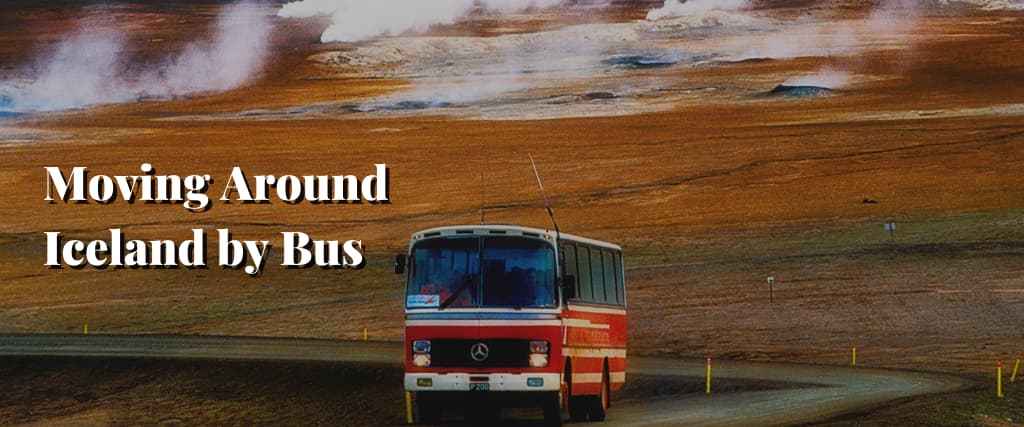
Moving Around Iceland by Bus
When traveling on a budget in Iceland, taking the bus is the last option; it is the least flexible and expensive option. It would be best if you relied on something other than them as your primary mode of transport. Some bus operators only travel in specific regions of the nation; Visit Iceland offers all the necessary information to utilize them. Since most bus services do not provide card facilities, be sure to carry cash.
Hitchhiking in Iceland
Hitchhiking is a frequent practice for travelers to Iceland. No need to wait longer for a ride because of the large number of car renters and the welcoming residents. Keep in mind that the weather in this area is unpredictable, so dress appropriately!
A company of three or more people will need help getting a vehicle with enough space and room for them, along with their luggage. Hitchhiking alone or in pairs will boost your chances of getting a ride. However, remember that hitchhikers are confined to the main thoroughfare because most minor routes are rarely used.
Traveling from Iceland
Iceland is an island, and flying via Reykjavik is the most convenient and affordable method to continue your journey from Iceland. The least expensive flights to Europe are frequently found in Paris, London, and Dublin. Wow, Air also offers cheap flights to the United States of America!
Employment in Iceland
Iceland is an attractive location for foreigners to give it a shot and look for employment. There is a possibility of work in the tourism industry for English speakers, and the min wage is $2400 a month. But, you must consider this in light of the high living expenses and growing unemployment.
Work Visa in Iceland
Iceland is open to residents and workers who are members of the EEA and EU. Everyone else will have to apply for a visa. Employers can only employ members of the second group following the acceptance of a job opportunity and signing a contract of employment.
Volunteer Opportunities in Iceland
Experiencing a new culture while giving back is made possible by volunteering overseas. Iceland has many volunteer opportunities, including teaching, caring for animals, farming, and quite everything else.
Iceland is not an impoverished country, but it frequently needs volunteers to aid in environmental protection. Most job options are in agriculture and landscaping; nevertheless, you can secure a job in human services and entertainment. Volunteers who originate outside the EEA and EFTA must first request a residence permit.
The most preferred resource for locating volunteer opportunities is Worldpackers, which links visitors with host organizations. Before you sign up, check out the Worldpackers website to see if they offer exciting opportunities in Iceland.
Travelers looking for volunteer programs frequently use the excellent website Workaway.
Most volunteer programs are supervised and handled by respectable labor exchange organizations like Worldpackers and websites like Workaway. However, be cautious whenever you volunteer, mainly when working with children or animals.
Tutoring English in Iceland
Since everyone in Iceland now studies English, qualified English teaching jobs are available. However, candidates must also possess a teaching credential to teach in Iceland.
Competing with Icelandic educators who frequently speak English or better than most native speakers will also put you at a disadvantage. So, being a native English speaker alone isn’t a direct ticket.
Eating in Iceland
There are a few essential foods in Iceland, such as fresh fish and lamb, which shouldn’t be surprising given that sheep make up most of the population. Visitors find it offensive that Icelanders enjoy eating whales, seabirds, sharks, or even horses as delicacies.
You can try Icelandic food because if you are on a small budget, avoid eating out and subsist on noodles and pasta.
Below is a list of a few popular local dishes:
- Skyr – creamy yogurt
- Icelandic hotdogs from Pylsur
- Hangikjöt – Halved meat, such as smoked lamb
- Harofiskur – Haddock that has been air-dried (such as fish jerky)
- Rúgbrauo – Dark rye bread is made using geothermal heat underneath
Cultures of Icelanders
Iceland’s culture has been shaped by its geography, history, and close ties to other Scandinavian countries.
Here are some critical aspects of Icelandic culture:
- Language: Icelandic is the official language of Iceland and is closely related to other Scandinavian languages, particularly Old Norse. It has remained relatively unchanged since the Middle Ages and is still spoken by most people
- Literature: Iceland has a rich literary tradition, with many famous writers and poets. The Icelandic Sagas, a series of epic tales written in the 13th and 14th centuries, are particularly well-known and have significantly influenced Icelandic culture
- Music: Icelandic music is diverse, with influences from both traditional and modern sources. Folk music, choral singing, and electronic music are all popular in Iceland. The country is also home to several music festivals, including the Iceland Airwaves festival
- Food: Icelandic cuisine is heavily influenced by the country’s climate and history. Fish and lamb are popular proteins, and traditional dishes include fermented shark, boiled potatoes with butter, and skyr (thick, strained yogurt)
- Sports: Icelanders are avid sports fans and participate in various sports, including soccer, handball, and basketball. The country has also gained international recognition for its ice hockey and handball success
- Art and design: Iceland has a thriving art scene, with many galleries and museums featuring the work of Icelandic artists. The country is also home to several design companies and is known for its innovative and modern approach to design
Icelandic culture is unique and diverse, with a rich history and a strong sense of national identity.
Traveling Phrases in Iceland
Learning and pronouncing Icelandic is difficult; it needs to be secreted. While most people speak superb English, you will always value your attempts if you are familiar with a few Icelandic phrases.
Pick up a copy of “The Little Book of Icelandic” if you wish to explore the language in great depth. His book is incredible; you’ll discover amusing slang terms, naughty words, and expressions. However, it offers a light-hearted perspective on Iceland’s heritage, lifestyle, and language.
Hello – Sæll
Thanks – Takk
Beer – Bjór
Where is? – Hvar er?
Best Books About Iceland
- Land of Sagas: This book was written by the amazing Jon Krakauer, who traveled over Iceland in summer and winter. He traveled across Iceland for stories about monks and Vikings, rebels and intrepid travelers, fairies, and witches. They had terrific adventures while traveling and taking pictures as they learned the stories and tales of Iceland’s exciting past.
- Tales of Iceland: This book is fantastic and hilarious! It’s about a group of American college students who travel to Iceland searching for the “fashion models who serve at McDonald’s.” Discover their humorous journey of partying, getting stuck, insulting the locals, and encountering absurd circumstances. If you enjoy dark humor, you should read this because you will laugh out loud.
- Iceland, Defrosted: Join an Englishman on his throughout Iceland. Little about conflicts over cod, volcanoes that disrupt air travel, and financially explosive individuals. More about soaking up the sun in outdoor hot tubs, having barbecues with friends during howling winter storms, and enjoying rhubarb jam on waffles while admiring playful Arctic fox.
- Sagas of Icelanders: This is your book if you want to hear some native Icelandic tales but find the language difficult. It has a collection of stories from Icelandic natives throughout the years. You are discussing Iceland’s mythology, culture, heritage, and geography. A must-read for anyone curious.
- Viking Age Iceland: Most people are first drawn to Iceland because they are fascinated with the Vikings. This book is for people interested in learning about feasts, agriculture, the influence of chiefs and the religion, marriages, and the place of women in Iceland. This history textbook is fantastic and will keep you engaged.
Short History of Iceland
Iceland is a small island nation located in the North Atlantic Ocean, northwest of the United Kingdom. It has a long and fascinating history that stretches back over 1,000 years.
The first people to settle in Iceland were Norse seafarers and farmers who arrived in the late 9th century. They established small farming communities and developed a unique culture that blended Norse traditions with the island’s indigenous culture.
In the 13th century, Iceland became a part of the Kingdom of Norway and later the Kalmar Union, which included Denmark and Sweden. It remained a part of Denmark until 1944 when it gained independence and became a republic.
Iceland has faced several challenges throughout its history, including volcanic eruptions, earthquakes, and financial crises. However, it has also been a leader in gender equality and environmental conservation.
Iceland is a modern, developed country with a thriving economy and a high standard of living. It is known for its stunning natural beauty, including glaciers, geysers, and hot springs, and its rich cultural heritage.
The first elected female president in history, Vigdis Finnbogadóttir, took over the country in 1980.
Unique Icelandic Experiences
Hitchhikers: While traveling across Iceland on foot, picking up backpackers is a lovely thing to do and a terrific way to gather ideas. They’ve probably been chatting with locals as they make their way about, so they’ve likely picked up some helpful travel advice. Talk to them and find out what you can learn!
Find Secret Hot Pots:
- Make it a point to look for hidden, hot pots (thermal springs) during your stay in Iceland. You can use sites like hotpoticeland to find the undiscovered treasures, cramming them into your calendar.
- Save the page so you may take a midnight soak in a private hot tub since there is nothing quite like it.
- Inquire about nearby attractions from the employees at your accommodation or your Airbnb rental.
Try A Farm Guesthouse: Look at guesthouses such as the Guesthouse Skalafell if you wish to add a memorable, comfortable stay to the trip. It will be easy to discover one because they are practically ubiquitous in Iceland.
They provide an individualized viewpoint on your journey, and the presenters always burst with helpful information and travel advice. You can check out rooms at Solvanes via Airbnb. The location is tranquil and secluded, and the homeowners are charming.
Relax in Freezer Hostel: Hostels are frequently hit or miss whenever quality is concerned. The Freezer hostel is a hit when it comes to quality. It is roomy, welcoming, inclusive, and operated by a genuinely pleasant guy. They have a fantastic kitchen, are directly close to a national park, and regularly feature live music and live theater performances in the summer. If you enjoy a laid-back vibe and are in the region, check this out.
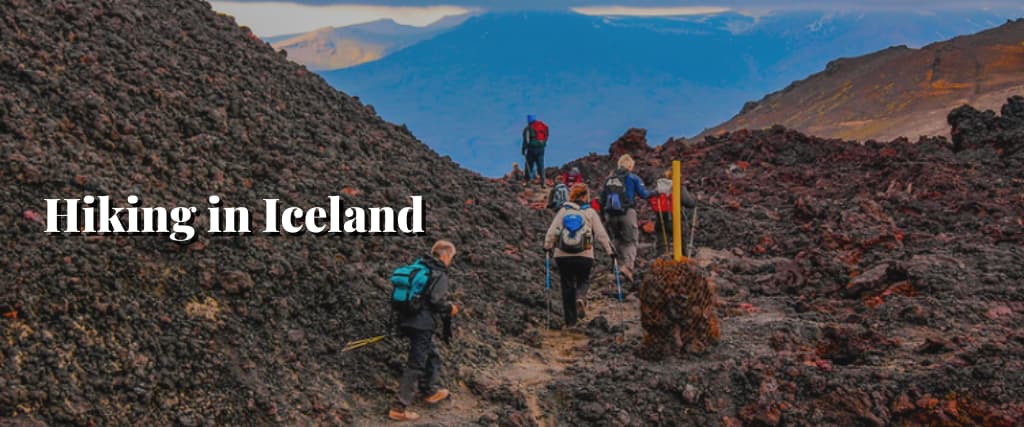
Hiking in Iceland
Going off the beaten path is the best way to discover and truly love a place. Put on the hiking boots and rucksack, then head towards the hills. The best day hikes, multi-day treks, peaks, and falls on the planet can all be found in Iceland.
You can spend memorable moments in the woods. Here are a few favorite treks you shouldn’t skip while exploring Iceland.
Vatnajökull Wilderness
Step out into nature, cross glacier rivers, and come across everything from arid lava fields to lush, fruitful valleys. This is the ideal situation for any seasoned hiker and outdoors enthusiast. Be prepared for challenges during this seven-day wilderness adventure. Glaciers, glacial streams, lagoon falls, volcanic fields, and the opportunity to relax in a hot spring will greet you.
The Vatnajokull Wilderness offers one of the most fantastic trip opportunities in Iceland, but it is not recommended for first-time hikers. The landscape is challenging, and you must take all the essential supplies. And unless you’re an expert navigator, good with maps and compass, you’re highly recommended to join one of the fantastic organized trekking tours.
It takes about seven days to complete the trek, and you may anticipate going ten to twenty kilometers each day or more. Although most hikers choose to camp while traversing the Vatnajokull backcountry, there are a few shelters along the route if you don’t feel like it.
If you feel like going less than 20 kilometers to reach the next hut that same day, camping tents provide the comfort of sleeping almost anywhere on the route.
The optimum time to take on such a hike is in July and August, when the weather is more predictable. Most tour operators only provide one tour per month with limited spots.
Expect to spend between 190,000 and 200,000 ISK if you want to participate in this hike and join a tour. Although not cheap, this destination will possibly offer you the most amazing outdoor experience.
Snæfellsjökull Park
Snæfellsjökull National Park was the first Park created in Iceland, and it touches the sea and the highest mountain peaks. You can be sure that it will provide some of the best day treks in Iceland. Take a stroll along the breathtaking sea cliffs that overlook volcanic beaches. Consider how ancient lava flows sculpted the cliffs and surrounding terrain.
You will find an old seafloor that was forced out of the sea at the height of the last ice age in the lower zone of the National Park. Try finding specimens in the rock if you’re a geology enthusiast. Those more interested in wildlife should sit by the shore and watch for whales and dolphins as they pass by. Look for puffins and other birds on the rocks.
If you’re lucky enough, you will see the stunning valleys and soaring hills enticing you toward the north of the Park. Consider starting your walk into the mountainsides above at the Eysteinsdalur Valley, a popular starting place for the day and multi-day climbs.
You can choose from various trails, and either does a quick 30-minute circle or go off the radar for a couple of days.
The Snaefellsjökull Glacier is 1,446 meters tall and a challenging climb, making it a major draw in this nature reserve. Many people believe that Snfellsjökull Glacier has mystical abilities and is among the seven big energy centers of the world.
Views of the Reykjanes Island, the Westfjords, and the east-facing Snaefellsnes alps may be seen from the peak.
There are numerous impressive waterfalls in Snaefellsnes Park that you should visit; hiking is about more than just climbing mountains. Seeing the beauty and strength beneath them in this natural environment is fantastic. Also, try to climb Bjarnarfoss Falls before leaving this Park.
Go to the rocks close to Budir and narrow your vision. A woman-like figure will be standing amid the waterfall with a cloud of drops about its shoulders. The waterfall and mountainous background help create a lovely shadow illusion that fools the eye into thinking the figure is a ghost.
The Laugavegur Trek
Iceland’s most excellent trekking route extends 53 kilometers from Landmannalaugar, a region famous for its warming hot springs and rainbow rhyolite mountains, where inhabitants have long loved relaxing. The journey will take you to the heights before reaching the glacier basin of órsmörk, where the view is rich in contrast and color.
There is a good reason why this walk is well-known and well-traveled in Iceland. You’ll go through various terrains as you travel along the trail, taking in some incredible sights and scenery.
This offers a fantastic multi-day hike for hikers of all experience levels, armature or experienced. You will walk for six hours or more each day, so you must be in good physical shape to enjoy it.
Most people finish the walk in five days or less. Faster for experienced hikers and longer for those who prefer to take their time and take in the scenery.
The hike is included in Nat Geographic’s list of the top 20 treks globally, and they are right. Obsidian fields, colorful peaks, black sand, geysers, gleaming white glaciers, glacial streams, elven churches, and many more may be seen on the visit.
Hire local guides who are incredibly knowledgeable to provide you with background information on the local flora and animals. Depending on your preference, you can camp or stay in mountain cottages the night in secluded yet stunning spots. The site also features all stunning locations: Alfavatn, Hrafntinnusker, and Thorsmork.
The huts cost roughly $40 per night, and the cost of camping in a designated area is approximately $10 per night. It is “not permitted” to camp outside the allocated campsites, but the regulations are slightly ambiguous.
You can take a chance, but if you do, you can get pushed along or penalized. But if the regulations are ambiguous, then play dumb.
This trek in Iceland is one of your favorites; it is fantastic. Check this out if you want to explore the woods without breaking the budget or needing to be an expert in the outdoors.
Fimmvorduhals Trail should be your next destination if you wish to continue hiking in Iceland after completing the Laugavegur Trek.
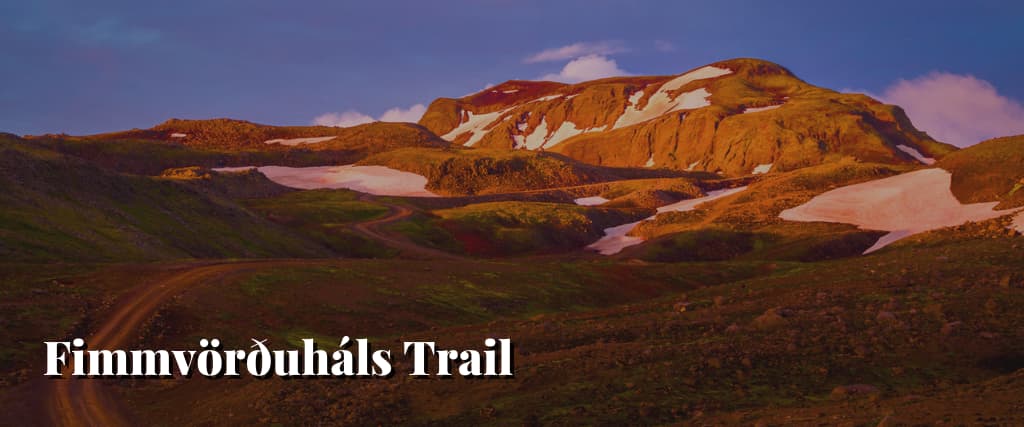
Fimmvörðuháls Trail
This trail is for everyone who enjoys taking photos; it’s breathtaking. For skilled (crazy) trekkers, this 25 km Fimmvöruháls trek in southern Iceland along the Eyjafjallajökull and Mrdalsjökull rivers can be completed in a single day. But don’t panic if you’re a newbie; take your time to explore the beautiful scenery.
Spend three days or more exploring and enjoying the breathtaking scenery. The summertime of July and August are the finest times to trek, as they are for almost all Iceland routes. Despite this, you’ll still have to cross the snowy tundra at the highest elevations of this walk.
This walk has few steep inclines or downhills, making it relatively simple. Trying to cling to the line along the cat’s spine can be the most challenging aspect of the hike, coupled with overcoming your phobia of heights. Enjoy some time to explore the beautiful waterfalls, ideal vistas, and stunning views along the famous Fimmvorduhals Trail.
Doing it in a single day isn’t advisable because you’d be rushing through its magnificence. Stay overnight in one of the lodges along the route or pitch a tent at one of the approved campsites. You must reserve the huts for the internet or at the information desks in significant towns.
Join an Organized Tour
Most nations, including Iceland, encourage solo travel. However, you can choose to join an organized tour if you lack the necessary time or energy or wish to travel with an incredible group of people. The nation’s bulk may be seen fast without the design-build for backpacking by joining a tour. Nevertheless, not all tour companies are indeed created equal.
G Adventures is a reliable, bottom tour operator that offers services to travelers just like you, and their rates and itinerary take into account the preferences of this market. In Icelandic, you can get excellent prices on incredible vacations for a quarter of what other tour companies charge.
Final Thought
Iceland is a stunning and distinctive nation with a lot to offer tourists. It is renowned for its extensive cultural heritage and breathtaking natural beauty, including glaciers, geysers, hot springs, and waterfalls.
Iceland is a fantastic location if you enjoy outdoor activities. Numerous national parks and nature reserves are located there, and there are multiple hiking, skiing, and fishing opportunities. Horseback riding, birdwatching, and whale viewing are popular nationwide activities.
Iceland is also a fantastic destination if you are interested in history and culture. There are numerous museums and cultural attractions to visit, and the nation has a lengthy and fascinating history. Several events and festivals are held annually, highlighting Icelandic traditions and customs. The Icelandic people are also renowned for their hospitable and friendly culture.
